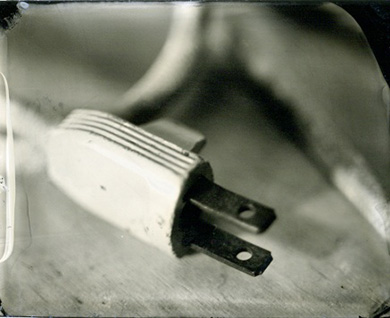


1.
When grocery stores gave out uneven lengths of green stamps—dominated by the elegant red swoop of S&H, marked over with mysterious letters and numbers indicating lot and origin—our mothers brought them home in brown paper bags of eggs and hamburger and ice cream, chicken and milk, cigarettes, iceberg lettuce cauled in plastic, Hawaiian Punch, apples, dinner rolls, canned peas, butter. We drew out the stamps and coiled them in Folger’s cans and leftover pickle jars. They waited for us to bring them out on the odd Saturday, tacky undersides fragrant with coffee and brine, to be affixed, to be redeemed.
2.
In 1896 two men, Thomas Sperry and Shelly Hutchinson, started a business unlike any other. The scheme was this: print stamps that stood in for exceedingly small denominations of cash and acted as rebate scrip for purchases, the first-ever “cash-back” program. Merchants purchased the stamps and gave them away to customers to build loyalty. It worked so well that by the 1960s, S&H was printing three times as many stamps each year as the U.S. Postal Service, and had sparked so many competitors that an estimated 80 percent of American households collected stamps. We did. You likely did. Then not.
3.
S&H Green Stamps survived a shockingly long time in their original form. Only recently did they become virtual, points “stored” online, in the hive mind of the YOU Technology corporation, associated with a log-in and email you assign yourself, redeemable from the black box for real or virtual lucre: electronic gadgets, travel, gift cards. S&H savings are now quantum. Yet the stamps are still redeemable, if you find some squirreled away on an unused back porch, at an estate sale, in your garage, attic, or basement. You can still cash them in, at a value of ten to a penny.
4.
In 1999, the last physical S&H trading stamps were issued. Only 100 retailers made good on them by then. The redemption centers—with their aisles of tradable goods, their paste necklaces and barbecues, their hideaway cots and chip-dip sets, their CD Walkmans and unattainable refrigerators and wet bars—closed for good, never to reopen. The S&H brand was resurrected two years later in a dramatic new form—no form at all. No long ribbons of actual paper scrip you could hoard and lick and stick on Saturday mornings, but potentialities, waves of consequence from a thousand buying decisions, redeemable online as points.
5.
The Greenpoints website, rounding its first decade of existence, presents a model of straightforward mercenary cheer that does its forerunner proud. Green Stamps are forever—forever redeemable, forever worth that 10th of a penny—a wormhole in consumer history that S&H makes no effort to hide. In fact, they don’t accept raw stamps, but insist on the old ritual: lick, stick, and deliver, in a real booklet if you have one or on a piece of plain paper if you don’t. These are tradable for new crap that only slightly resembles the old crap: Apple instead of Sony, Cooking.com instead of Corningware.
6.
No stamps, no catalogue. No catalogue, no leafing through the pages, lying belly-down on the floor watching reruns. No redemption center, no redemption. No piling into the car when you finally have enough for the ping pong table, no scent of your mother’s perfumed filmy scarf and your father’s cigarette (wreathed in smoke and reeking in the 1960s; why do we only remember the scent of our mother’s skin as well as her perfume, and the new-mown grass as the Oldsmobile cruised toward downtown?). No going from aisle to aisle, the culminating sequence of quantum moments, observing, observing, deciding, deciding.
7.
Greenpoints are now like any other value points: Upromise, eScrip, credit card points, customer loyalty cards (buy 10 sandwiches and get the 11th free). It is actually possible to get real things with points, from Pyrex bowls (15,000 points) to a MacBook Air (2.1 million points). The best deals are in the gift cards, though, more virtual money that can get you deals at Home Depot, AMC movie theaters, Shell gas stations, the like. Here the point values waver: 1,000 only sort of equals a dollar. You really do have to be a particle physicist to see a point’s value.
8.
It’s Saturday morning. The stack of free booklets waits on the kitchen table, adhering to the patina left from a fresh sponging off. The stamps from these past weeks curl over the edge of a big bowl in the center, a bounty whose spiritual value is unequalled even by the same value in cash. This is the palpable benefit of our thrift, a virtue doubled by the painstaking work of licking and sticking. The holy trinity lies in the ultimate act of redemption, be it today or next week, next month or (yes, it’s possible) decades after we are dead.
9.
What I am writing has never been printed. I write and pare, curbing desire and amplifying accuracy, sans ink or paper. My research was in pixels, LED display flickering too fast to see; and in conversations that re-established memories across generations now reduced to generalities. Roaring 20s, Depression, War, Fifties, Sixties, Seventies. If I am lucky, and you are reading this now, it’s likely on a screen, ciphers of light representing my assembled memory, reaching your own through those peculiar windows, the eyes. This is not a bad thing. This is more efficient. It’s just what is. Or is it?
10.
That is what makes the ping-pong table, in this pre-quantum world, such a constant: the heft of the books it took, the weeks of saving, never swerving to another desire. Everything was real in the aisles of redemption, and we had to repeatedly say No. No doll. No hair dryer. No griddle. No—infinitely hard on my dad—no humidor. We stubbornly licked the backs of each stamp. We earned the right to unload the boxes of booklets, earned the ticket that gave us entry to the loading dock. My father slid the table into the back of the station wagon. Ours.

